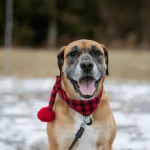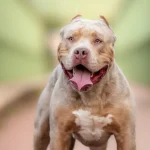Canine Parvovirus (also known as CPV) is a highly infectious disease that affects dogs. It spreads through bodily fluids such as dogs’ faeces and vomit. Parvo can also be spread on shoes, clothing and hands from humans. However humans cannot contract this disease from a dog. It takes up to seven days for a dog to show signs of having parvovirus after they have caught it.
It is a really nasty disease and your dog can catch parvovirus by:
- Sniffing another dogs faeces
- Coming in to contact with bedding, food and water bowls, carpet, or a kennel that a dog with parvovirus has touched,
- Going out for a walk in the park as the virus can survive outside the body such in in the grass at a park for at least six months.
The number of cases of dogs with canine parvovirus has been reduced dramatically by early vaccination in young puppies.
Symptoms
There are a few symptoms to look out for in your dog which could mean they have canine parvovirus which include:
- Loss of appetite
- Vomiting
- Severe bloody diarrhoea
- Lethargy
- Fever
- Severe weight loss
- Depression
Dogs can die from this virus which is why it’s so important to protect them. This could be due to bacterial infections where the bacteria from the virus leaks into the blood stream. Severe dehydration from diarrhoea and loss of appetite can also be life threatening.
If you recognise the symptoms above in your own dog, call your vet immediately for advice. Make sure to tell them what symptoms your dog has, and whether or not they’ve come into contact with a dog with confirmed parvovirus.
Who’s at risk?
Puppies and unvaccinated dogs are most at risk from contracting canine parvovirus. The initial puppy vaccinations and the yearly boosters at The Vet include a protection against parvovirus which is why they are so important.
Puppies can go downhill very quickly if they catch parvo as their immune systems have to work very hard to fight the disease. Plus they can be more likely to contract a secondary infection from it.
Parvo outbreaks are most commonly seen in towns and cities with large populations of unvaccinated dogs.
Summary
You can protect your dog from this potential killer by making sure they’re up-to-date with their vaccinations. Puppies need their first vaccination at 8 weeks and then a further vaccination 3-4 weeks later. After this all dogs should have a yearly booster vaccination. Unfortunately, as with all vaccines, there are very rare cases that dogs contract the virus even though they have been vaccinated. However this is only a very small number of cases as the vaccination has been protective in many dogs.
For more information on canine parvovirus, or to get your dog or puppy vaccination, visit your team at The Vet.





